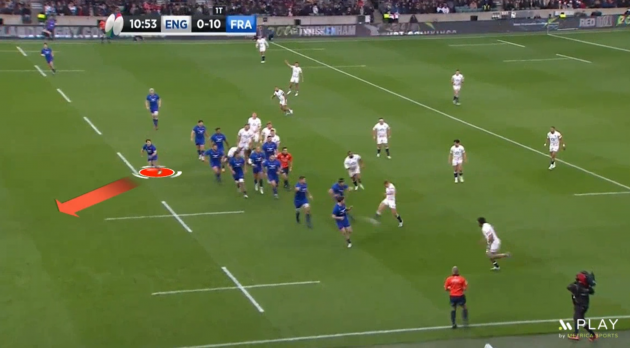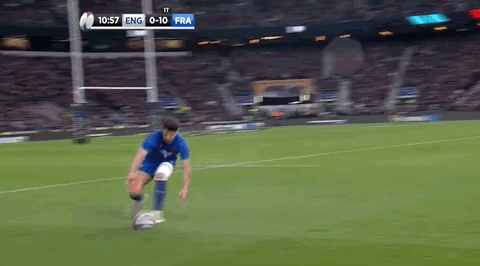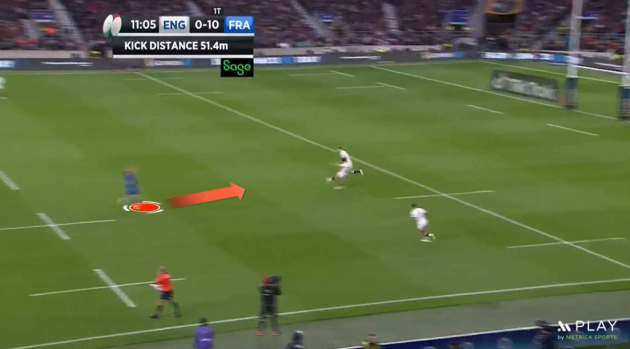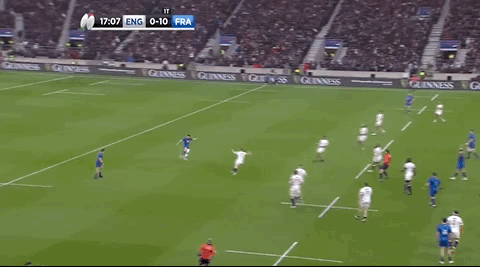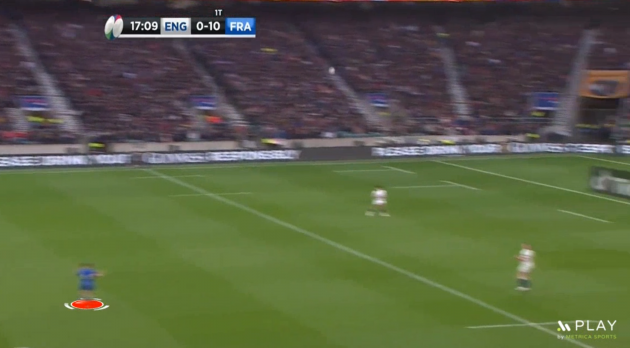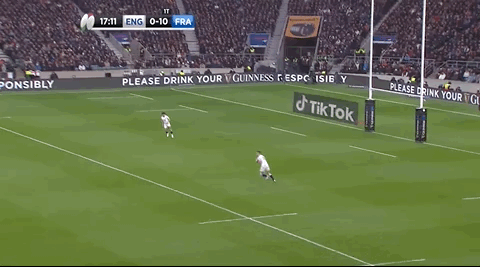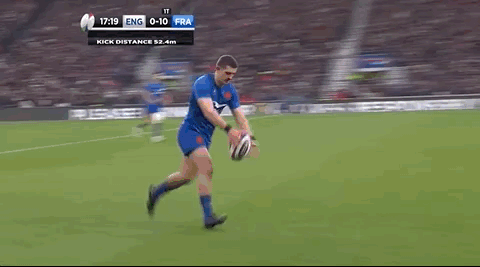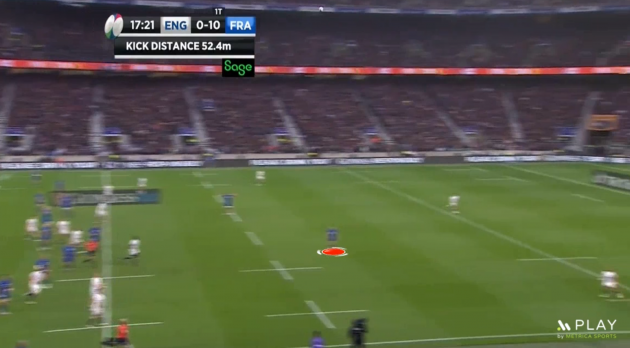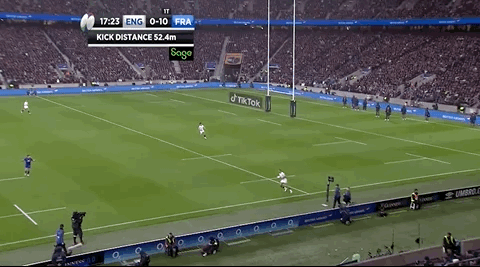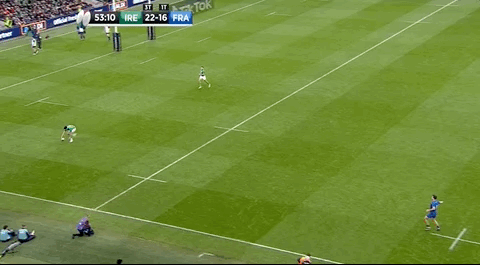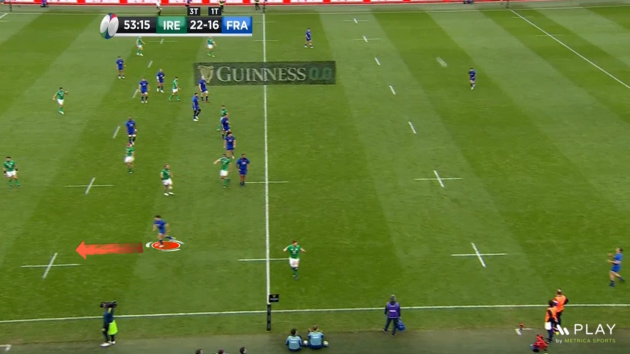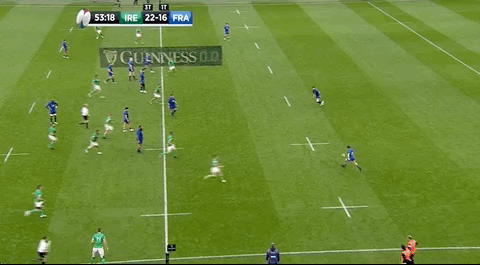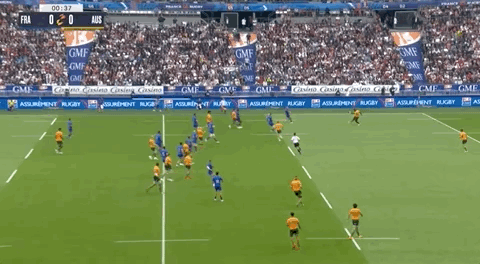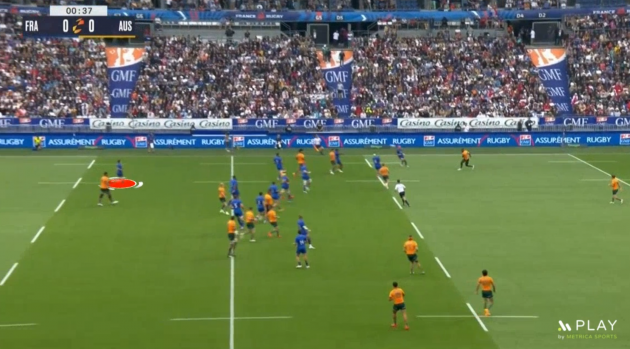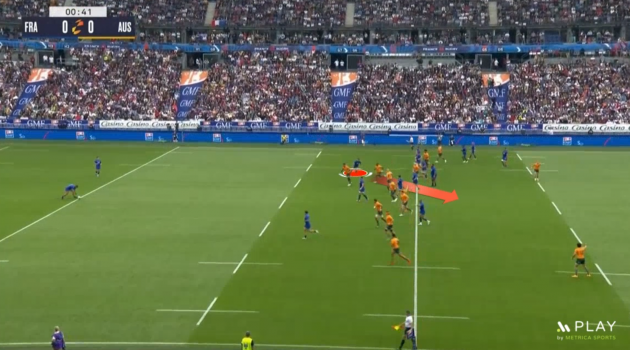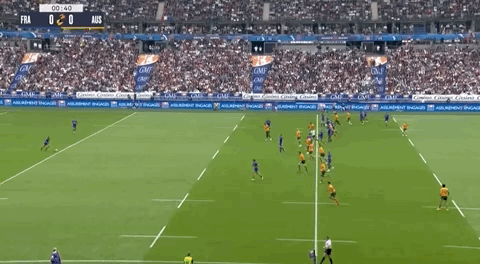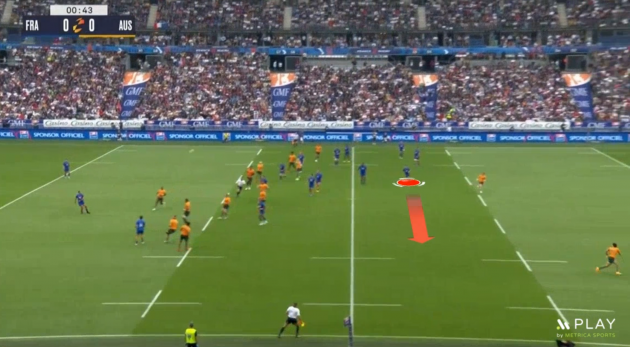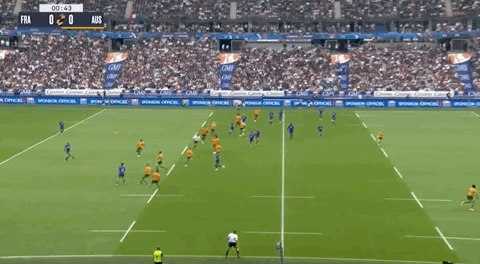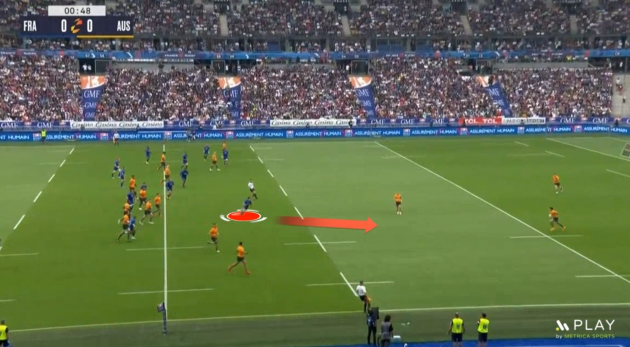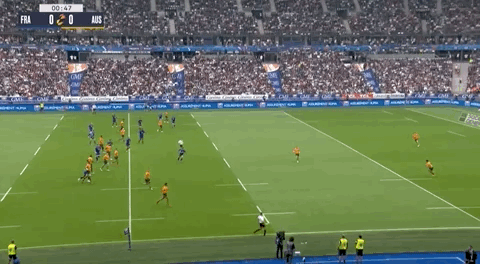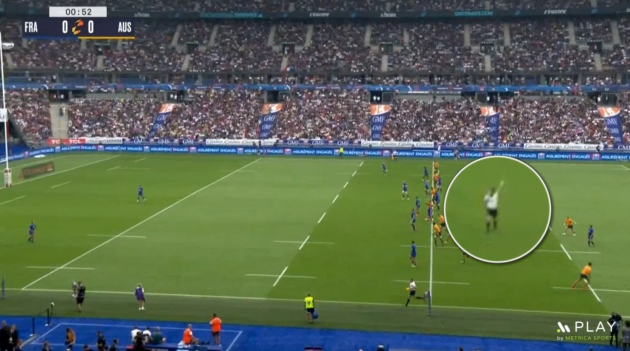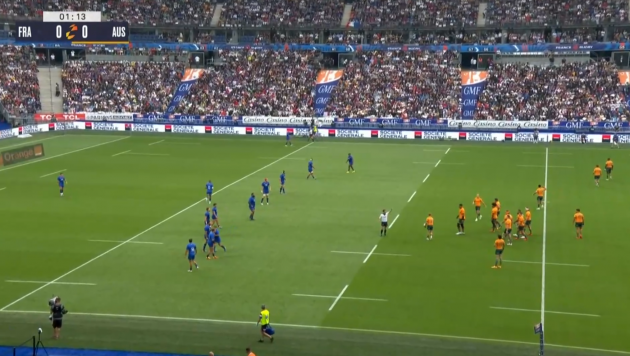HAVING A RECENTLY retired international referee as part of your coaching team seems like a smart idea given how important discipline is to winning at the highest level.
France needed to sharpen up in that area, so when Jérôme Garcès retired after refereeing the 2019 World Cup final, les Bleus pounced. Head coach Fabien Galthié convinced Garcès to join their mission to win the World Cup on home soil this year.
Garcès is influential in the French camp, analysing their discipline, refereeing training, and sitting alongside the other coaches on game day providing feedback and suggestions. We can only imagine that players and coaches are constantly picking his brain.
As soon as Garcès was appointed, you wondered how much France would start testing the limits of the laws in search of advantages. A top referee knows better than anyone what might be allowed.
So it has been no surprise to see the French pushing the boundaries. One area that has been apparent is around the offside law, specifically when it comes to the kicking game. Intelligent scrum-half and captain Antoine Dupont has often been at the forefront of this.
Let’s look at an example from this year’s Six Nations. England have turned les Bleus over and kick into the French half.
Dupont initially moves downfield, seemingly worried about a short kick from England in behind the French defence.
But as soon as he recognises that it’s a longer kick and there’s French cover there, with a probable return kick to come, Dupont eases off and simply holds his ground near the English 10-metre line.
Romain Ntamack has kicked back into the English half and Dupont is clearly well ahead of his out-half and offside.
There’s no chasing player to bring Dupont onside either, but he just chills out where he is.
It’s difficult to see in the image above but Dupont is holding his hands up to indicate that he’s not moving towards the ball.
What’s important here is that Dupont is more than 10 metres downfield from where the ball is going to be caught by England’s Marcus Smith.
Rugby’s lawbook tells us that offside players can be penalised if they “interfere with play” or “move forwards towards the ball.”
Offside players can also be penalised if their team-mate kicks the ball and the offside player fails to move immediately behind an onside team-mate, or behind “an imaginary line across the field 10 metres on that player’s side from where the ball is caught or lands.”
It’s a bit wordy but in this instance, we can see that Dupont is 10 metres downfield from Smith. Dupont is not interfering with play or moving forwards towards the ball. So even though he’s offside, he’s OK there.
What Dupont is waiting for is Smith to make his move. The lawbook tells us that Dupont will be put onside if an English player carries the ball five metres, passes the ball, or kicks the ball.
Having fielded Ntamack’s kick, Smith duly obliges by carrying the ball five metres.
So Dupont is now back onside and can close up on Smith, dissuading him from running back at France and pressuring his kick.
It’s seriously clever work from Dupont and France, who have been doing this for around 18 months now.
Dupont continued to do it in this game against England, as we see in another example below.
Ntamack is the French kicker again, with Dupont waiting upfield.
Again, Dupont makes no effort to retreat, but he is behind that imaginary line 10 metres upfield from England fullback Freddie Steward, who catches.
Dupont waits for Steward to carry the ball five metres, then makes his move to close him down, having been put onside.
France respond with another kick, this time from their fullback Thomas Ramos.
Again, Dupont has stayed upfield waiting for that return kick.
And again, England carry the ball five metres, this time through Anthony Watson, and Dupont reacts to put pressure on.
England question the legality of Dupont’s actions here, with captain Ellis Genge saying, “Dupont’s offside there!” to referee Ben O’Keeffe.
“As long as he’s outside the 10 metres, it’s fine,” responds O’Keeffe.
Dupont was at it throughout this year’s Six Nations and there was an added layer in some of the instances. This is where it gets really interesting.
Take this example against Ireland. Conor Murray scoops up a French kick and responds in kind.
Dupont is near the halfway line as Murray kicks.
But just watch what Dupont does next, moving further upfield into the Ireland half while the ball is in the air.
Dupont recognises that Ramos will almost certainly catch and kick again, so Dupont takes this chance to get further upfield before Ramos kicks the ball.
There’s nothing to prevent Dupont from doing this. It’s very clever.
Until Ramos actually kicks the ball, Dupont is entitled to move forward upfield.
In this instance, it ends up being to no avail.
Ramos’ kick doesn’t travel very far and so, Dupont has to reverse his run, getting downfield to take him behind that imaginary 10-metre line from where the ball is going to be caught.
Still, it was striking to see Dupont make this move ahead of the ball and we wondered when it would pop up again.
Lo and behold, it came to pass in France’s final warm-up game for the World Cup.
In the very first minute of the match, Dupont was penalised for being offside.
Let’s go through it.
Australia wing Suliasi Vunivalu kicks out of Australia’s half.
Dupont is in between the halfway line and France’s 10-metre line over on the far side of the pitch.
Dupont’s next move is fascinating.
As Ramos controls the bouncing ball with his foot, Dupont takes off upfield.
Rather than subtly walking upfield, this time he actually sprints to make up as much ground as he can.
Dupont eats up 10 metres before Ramos kicks the ball and as the French fullback does so, Dupont levels out his run.
Dupont now runs cross-field to bring himself closer to where Australia wing Mark Nawaqanitawase is going to catch the ball.
And then, when Nawaqanitawase carries the ball five metres, Dupont straightens back up and sprints to put pressure on him.
Once again, Dupont’s presence discourages Nawaqanitawase and pressures his kick.
The whole thing just looks strange with that upfield sprint from Dupont followed by the cross-field run.
And the whistle is sounded by referee Luke Pearce.
Dupont queries the call and Pearce outlines his decision in French first, telling Dupont that “there’s no one to contest the ball, offside. You are the only player ahead of the ball.”
Pearce then switches to English and says, “Offside, number nine, no chaser, offside.”
It’s an intriguing call, particularly as Pearce then awards the penalty to Australia on the nearside of the French 10-metre line.
So what did Dupont actually do wrong here?
His sprint upfield isn’t a problem. It looks weird but Dupont isn’t actually breaking any laws in doing so, as long as it’s before the kick by Ramos.
The issue here is Dupont’s run sideways across the pitch, although France clearly discussed him doing this. They saw a possible loophole in the law and said they’d give it a go.
While it’s generally understood that offside players can’t move towards the ball, the law specifically says an offside player can be penalised if they “move forwards towards the ball.” The word ‘forwards’ suggests a player running upfield, not running across the pitch, or so France might have argued.
But most referees would agree that Dupont moves towards the ball illegally when he runs across the pitch. They could also suggest that he “interferes with play” in making that run across the field because it dissuades Nawaqanitawase from running the ball back.
In that sense, the penalty probably should have been given in between the halfway line and Australia’s 10-metre line where Dupont started running across the pitch.
It’s understood that this penalty was discussed by World Rugby’s head of match officials Joël Jutge and the top referees since France’s game against the Wallabies, with several coaches getting in touch for a directive on it.
It sounds like World Rugby has indicated that a player in Dupont’s position cannot move forwards or sideways after one of their team-mates has kicked the ball.
Running forward before the kick and then holding ground after the kick is OK as long as Dupont or whoever else is behind that imaginary 10-metre line.
So it’s something to keep an eye on when les Bleus take on New Zealand in the World Cup opener on Friday night.
And it’s only one example of how France are pushing the boundaries with a referee in their ranks.


